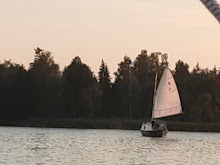Nowe Horyzonty coraz bliżej, więc nawet dobrze, że na Festival Scope nieco spokojniej (edit 13/7: nieaktualne już), bo można się lepiej do wyjazdu do Wrocławia przygotować. Niemniej nadal można (i należy) obejrzeć większość propozycji TorinoFilmLab.
Mi najbardziej do gustu przypadł Mercuriales Virgila Verniera, zresztą wyświetlany na NH jako Wieżowce. W opisie przywoływano Markera i Godarda (którego 2 ou 3 choses que je sais d'elle podobno się inspirował). Mi się skojarzył z Rivette'em (gry "miejskie", mitologizowanie) i Rohmerem (przez przedmieścia, więc szczególnie z Les Nuits de la pleine lune). Kto mnie trochę zna, ten wie, że z takiej konstelacji nazwisk niczym z tarota można było wywróżyć, że ten film mi się spodoba.
Do tego można dołożyć kartę Jamesa Ferraro, który nie jest w żadnym razie jakimś moim faworytem, ale sam fakt, że reżyser poprosił go o muzykę, pokazuje w jakich obszarach ten twórca się porusza. Do tego dorzucił jeden utwór Can.
 Niektórzy może poznają te budynki z rewelacyjnego fotoreportażu, którego część drukował "Duży Format".
Niektórzy może poznają te budynki z rewelacyjnego fotoreportażu, którego część drukował "Duży Format". 
Nie jest to na pewno film, jak to się ujmuje, spełniony czy kompletny, ale dla mnie dzięki temu tym ciekawszy. Vernier próbuje, sonduje, czasem po omacku, puszczając wodze i stąd wrażenie, że nie wie, w jakim kierunku zmierza. Nie trafiłem na żadne wzmianki o sytuacjonizmie w omówieniach tego obrazu, a przecież to dryfowanie jest bardzo w ich guście - "painting a collage-like portrait of a land gone to waste, and whose survivors are a mix of outcasts, fanatics, strippers and other marginal figures that Vernier captures with a certain level of compassion." (tam też, że muzyka trochę jak "a John Carpenter soundtrack remixed by a madman.")


"They’re totally mundane towers, like you could find in any Western city—or in fact in any city that has experienced that expansion of capitalism that led to the building of financial zones. These areas always have the same architecture, made of steel and one-way mirror windows in which the sun gets reflected. These structures seem to be the totems of a civilization that wants to magnify the power of the economy and money and to always be higher. All these totems strike me as being rich with meaning now that there’s been an economic crisis. In the past, they seemed to be urban aberrations, but now they already look like the totems of a lost civilization, which is in crisis and in danger of collapse and being destroyed by planes and people who want to make a revolution." (cały wywiad z VV bardzo wart lektury)
Trochę podobnie rzecz się ma z pokazywanym w Wenecji debiutem Yorgosa Zoisa, nie tylko reżysera, ale też scenarzysty i aktora.

Znów, o autorze dobrze świadczy dobór osób odpowiedzialnych za dźwięk, podział ról jest tak przez niego opisany: "music Sylvain Chauveau, soundscapes+drones Novi_sad."

To też nie jest arcydzieło, ale na pewno warto sprawdzić (i dużo bardziej "skupiony" niż Mercuriales).

Mówi Zois: The biggest challenge was to transform the theatrical set-up into a cinematic mise-en-scène. That is why I used borders, and in fact I tried to dissolve them. Light and darkness, actions happening inside and outside of the frame. My aim was to create a streamlined continuum of dark seats spreading from the cinema seats of the real movie theatre to the dark seats of the fictional theatre. At the premiere, it would feel like the audience of the theatre had merged with the audience of the cinema.
Pozostałe filmy w osobnych wpisach:
Nahrani me z besedami - Martin Turk
In Jouw Naam - Marco van Geffen
Korso - Akseli Tuomivaara
Leones - Jazmín López
Ni le ciel ni la terre - Clément Cogitore
Yek khanévadéh-e mohtaram - Massoud Bakhshi
Lelaki Harapan Dunia - Liew Seng Tat
Il Sud è niente - Fabio Mollo
7/10/2016
TorinoFilmLab (wpatrywanie cz. 24)
napisał
Piotr Tkacz
o
13:36
Subskrybuj:
Komentarze do posta (Atom)


Brak komentarzy:
Prześlij komentarz